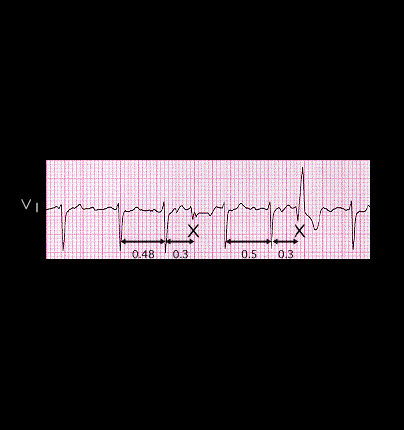
[FRAMES 66 AND 67 INTENTIONALLY OMMITTED] Aberrant ventricular conduction also occurs in the setting of atrial fibrillation and atrial flutter when there is variability in the RR intervals. Shown here is lead V1 from a patient with atrial fibrillation. The aberrantly conducted beats are labeled with an X. Note that ECG shows incomplete right bundle branch block in the first aberrantly conducted beat and complete right bundle branch block in the second. Both of the aberrantly conducted beats occur 0.3 seconds after the preceding beat, but the immediately preceding cylcle length is 0.48 seconds in the first instance and 0.50 seconds in the second. This slightly longer preceding RR interval probably explains the greater degree of right bundle branch block in the second premature beat, This phenomenon, appearing in patients with atrial fibrillation and flutter, when aberrant conduction occurs in a beat with a short cycle length that is preceded by a beat with a longer cycle length is referred to as the "Ashman Phenomenon".
